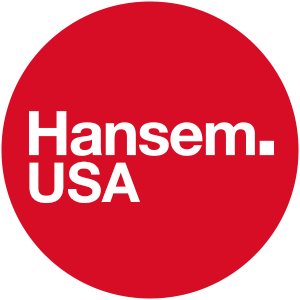

Localization


It’s a mistake to think launching your brand in Asia is as simple as translating words from one language to another – yet we see this all the time. Without full-scale localization, brands in Asia often face more than just translation errors; they encounter significant barriers to customer engagement and loyalty; for example, a product that has lots of bugs. On top of that, Asian languages and markets have unique characteristics that can make localization particularly challenging.
Keep reading as we explore the challenges that make Asian localization require so much finesse and share our insights from 30+ years of experience in mastering localization across Asia.
What makes Asian localization so unique? There are three major challenges:


Over 2,300 languages are spoken in Asia, and the most widely spoken Asian languages differ from Western languages in ways that make Asian translation especially challenging.
Structural differences: Asian languages like Japanese, Chinese, Vietnamese, Thai, and Korean all have grammatical rules and structures that are drastically different from English and other major Western languages. To name just one of many differences, both Japanese and Korean use a subject-object-verb sentence structure, in contrast to English’s subject-verb-object syntax.
Character-based scripts: Many Asian languages come with their own writing systems, and this can introduce complications when translating from languages that use alphabets (like English). This is a particular concern in CJK (Chinese, Japanese, Korean) localization. For instance, the Chinese language uses Hanzi characters, a logographic (drawn + word) script where each character represents an idea, word, or concept. There are thousands of these, making accurate translation a complex process. Japanese is equally complex, using a combination of adopted Chinese characters called kanji along with two different systems based on the syllable, hiragana, and katakana.
Logographic characters can also add an extra layer of complication when translating brand names: how do you find characters that approximate the correct pronunciation while representing the brand appropriately? Coca-Cola faced this conundrum in its earliest Chinese localization efforts. Before they’d settled on an official Chinese brand name, local distributors began to represent it phonetically (based on sound) in a way that translated to “Bite the wax tadpole.” For their official launch, Coca-Cola settled on a series of characters pronounced “Ke-kou-ke-le” which translates to “let your mouth be happy.”
Different writing systems can also cause issues with spacing and layout in web pages and documents. There are two underlying reasons for this. First, because the direction the languages are read in can vary: English is left to right, but some Asian languages are top-down (poetic and decoration purpose). Secondly, different scripts require more or less space to encode the same information. For example, lines of text in Thai must be taller than those in Latin script to accommodate Thai characters.
Formality and respect: Social hierarchies and relationships are deeply embedded in most Asian languages. For example, in Japanese, verbs are modified the suffix based on the level of required respect (aka honorific tiers) depending on who you’re addressing and the tone you’re using to address them. In Korean, there are seven different levels of formality. Misunderstanding the level of formality can lead to communication that is perceived as rude or overly familiar, impacting brand perception negatively.
Context and nuance: Many of the most widely spoken Asian languages are “high context”, which means that a phrase might have different meanings depending on the situation, the speaker, and the audience. For example, in Japanese, “difficult” often means “No” in a business context. This indirect way of communicating a negative response helps maintain harmony and respect between parties, but it makes localization challenging since translating words without understanding the underlying context could lead to misinterpretation of the intended message.

Technical challenges in localizing for Asian markets include navigating character limits since text expansion and contraction can run up against display field parameters. For example, when translating text from English into CJK (double byte characters), you can expect the text space to expand.
Font and encoding support are also critical because Asian scripts require specific character sets that may not be supported by all platforms. There are also challenges with machine translation (MT.) Many popular MT engines have limitations when it comes to accuracy, especially with low-resource languages in Asia. These can be overcome in some situations by choosing the best-fit translation engine for the job, having strong translation memories, and using skilled human translators for quality assurance. In other cases, human expertise is required right from the start.

Culture includes characteristics like the collective beliefs, values, preferences, attitudes towards family and work, and unique idioms and jokes that define and distinguish one group of people from another. Asian cultures and Western cultures differ substantially, and your content will need to adapt accordingly. For example, idiomatic expressions and figures of speech that are commonplace in one language may not have a direct equivalent in another, requiring creative adaptation to convey the intended meaning accurately.
Dialectical variations can also add complications. Chinese has a number of major dialects, and which one to use is often as much a matter of culture and politics as it is of being understood better than another dialect in certain contexts.
Imagery, including the symbolism attached to different colors in different cultures, can also be a sticking point. For example, in the 1950s, Pepsi changed the color of its vending machines from a rich royal blue to a lighter blue hue. Since light blue is associated with mourning in some parts of Asia, their sales took a nosedive before they figured out what went wrong and changed the colors back.
Asian consumers also have high expectations of brands and plenty of options closer to home, so it’s important that marketing take their values and beliefs into account.
Resourcing for languages like Indonesian, Thai, and Malay presents unique challenges due to a smaller pool of experienced translators and localization experts. In up-and-coming markets like Vietnam, there may be more translators available but only a few providers use the latest in translation technology and are certified to ISO standards.
It’s important to know that the scarcity of resources can lead to longer timelines and higher costs for localization projects. Companies aiming to localize content into these languages must plan accordingly, prioritizing the selection of providers with a strong network in these specific language markets to ensure quality and cultural appropriateness.

Navigating these challenges requires a strategic approach. Here are our top 6 tips to do so successfully:
As you prepare to enter a new Asian market, set yourself up for success by choosing an experienced and capable localization provider. Opt for one with an extensive network of local talent and look for a provider with a proven track record for both your industry and your specific target market. Technology can streamline the localization process, so also be sure to look for a partner that skillfully integrates tech solutions without losing the human touch required for accuracy and quality.

Successfully localizing your brand for Asia demands more than just translation—it requires a deep understanding of cultural nuances, market-specific strategies, and the right technological support. With Hansem, you gain access to three decades of experience, a strong network of local experts, and cutting-edge technology.
Ready to make your brand thrive in Asia? Book a call or contact us today.
Hansem Global is an ISO Certified and globally recognized language service provider. Since 1990, Hansem Global has been a leading language service company in Asia and helping the world’s top companies to excel in the global marketplace. Thanks to the local production centers in Asia along with a solid global language network, Hansem Global offers a full list of major languages in the world. Contact us for your language needs!
 Transforming B2C Sales Training with Gamification
04.14.2024
Transforming B2C Sales Training with Gamification
04.14.2024
 The Impact of Localization on Salesforce’s Success with Hansem Global
04.07.2024
The Impact of Localization on Salesforce’s Success with Hansem Global
04.07.2024
 Mastering Right-to-Left (RTL) Language Localization: Avoid the Top 5 Desktop Publishing (DTP) Mistakes for Global Success
04.03.2024
Mastering Right-to-Left (RTL) Language Localization: Avoid the Top 5 Desktop Publishing (DTP) Mistakes for Global Success
04.03.2024